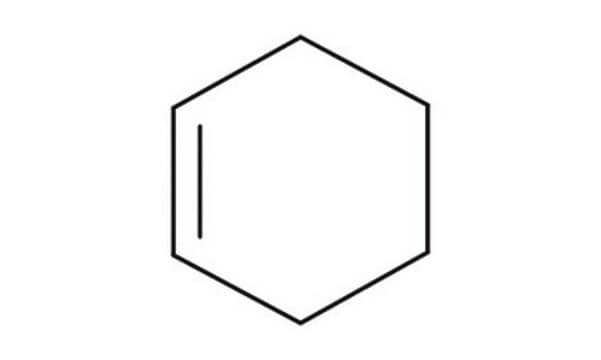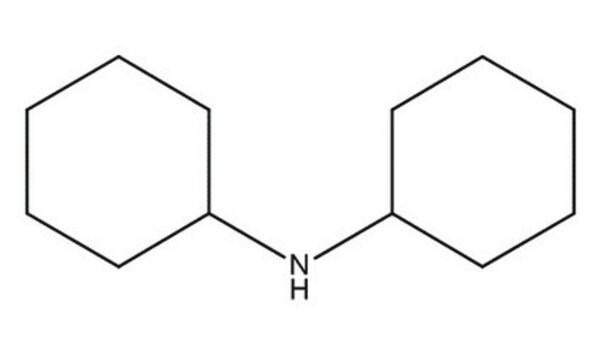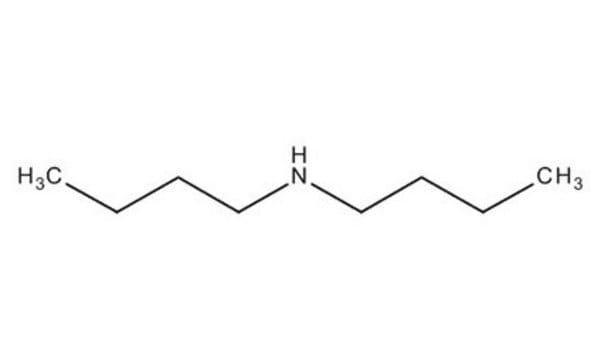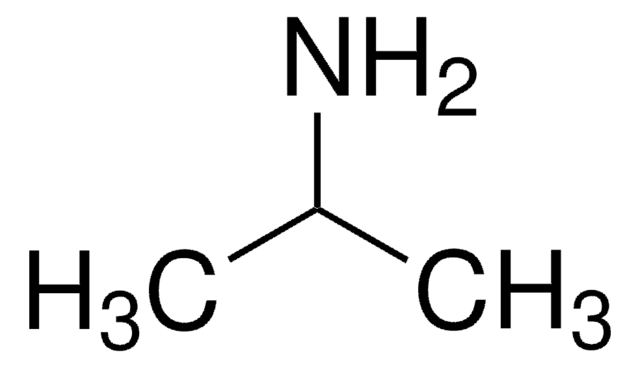8.02885
Cyclohexylamine
for synthesis
Synonym(s):
Cyclohexylamine, Aminocyclohexane, Cyclohexanamine
About This Item
Recommended Products
vapor pressure
14 hPa ( 20 °C)
Quality Level
assay
≥99.0% (GC)
form
liquid
autoignition temp.
265 °C
potency
300 mg/kg LD50, oral (Rat)
expl. lim.
1.6-9.4 % (v/v)
pH
11.5 (20 °C, 100 g/L in H2O)
bp
133-134 °C/1013 hPa
mp
-18 °C
transition temp
flash point 27 °C
density
0.87 g/cm3 at 20 °C
storage temp.
2-30°C
InChI
1S/C6H13N/c7-6-4-2-1-3-5-6/h6H,1-5,7H2
InChI key
PAFZNILMFXTMIY-UHFFFAOYSA-N
Looking for similar products? Visit Product Comparison Guide
Application
- Fluorescent sensor for aliphatic amines: Research on a mixed-linkage donor-acceptor covalent organic framework reveals its potential as a turn-on fluorescent sensor for aliphatic amines, including cyclohexylamine, providing insights into its applications in chemical sensing technologies (Yue et al., 2023).
Analysis Note
Density (d 20 °C/ 4 °C): 0.866 - 0.868
Water (K. F.): ≤ 0.30 %
Identity (IR): passes test
Due to its specific melting range the product may be solid, liquid, a solidified melt or a supercooled melt.
signalword
Danger
Hazard Classifications
Acute Tox. 3 Dermal - Acute Tox. 3 Oral - Eye Dam. 1 - Flam. Liq. 3 - Repr. 2 - Skin Corr. 1B
Storage Class
3 - Flammable liquids
wgk_germany
WGK 1
flash_point_f
80.6 °F - closed cup
flash_point_c
27 °C - closed cup
Certificates of Analysis (COA)
Search for Certificates of Analysis (COA) by entering the products Lot/Batch Number. Lot and Batch Numbers can be found on a product’s label following the words ‘Lot’ or ‘Batch’.
Already Own This Product?
Find documentation for the products that you have recently purchased in the Document Library.
Customers Also Viewed
Our team of scientists has experience in all areas of research including Life Science, Material Science, Chemical Synthesis, Chromatography, Analytical and many others.
Contact Technical Service



















